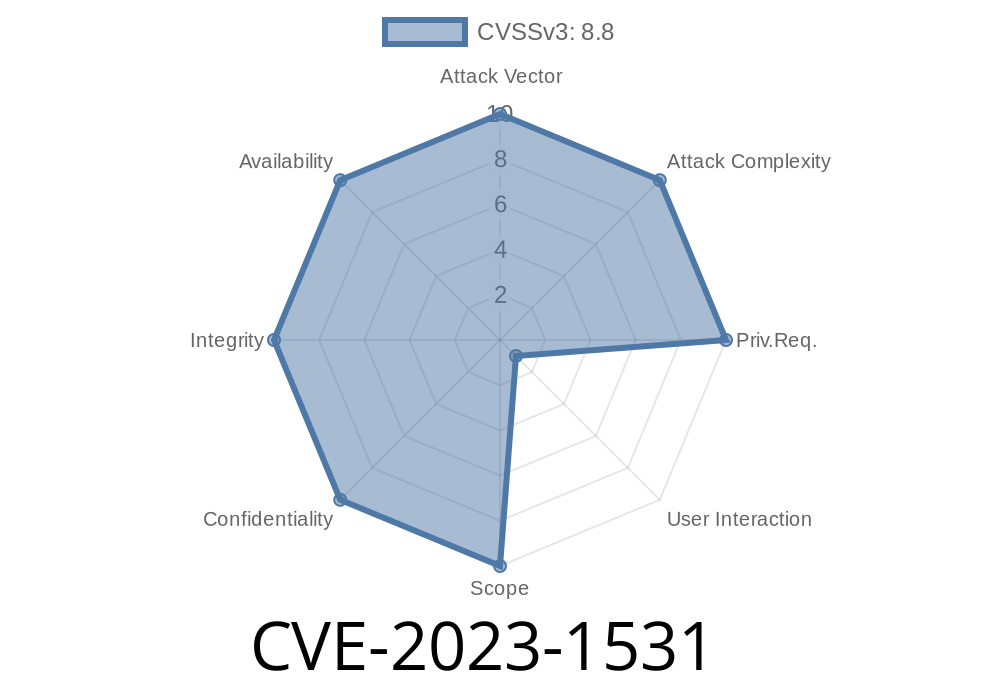In this post, we will discuss a critical vulnerability identified as CVE-2023-1531 found in ANGLE, a widely used graphics engine in Google Chrome web browser. This use-after-free vulnerability could potentially allow a remote attacker to exploit heap corruption by crafting a malicious HTML page in Google Chrome prior to version 111..5563.110. The Chromium security team has classified the severity of this vulnerability as High.
Exploit Details
The vulnerability lies in the ANGLE graphics engine used by Google Chrome, responsible for proper rendering of WebGL and 2D graphics. ANGLE allows Chrome to run various graphics APIs across all platforms, but the use-after-free exploit presents a serious flaw that could be exploited by remote attackers.
The vulnerability is triggered when an object is used after it has been freed from memory - hence the term "use-after-free". In this particular case, the heap corruption occurs through malicious manipulation of the ANGLE internal data structure.
Code Snippet
The following code snippet demonstrates a possible implementation of a malicious HTML page that could potentially exploit this vulnerability:
<!DOCTYPE html>
<html>
<head>
<title>CVE-2023-1531: ANGLE Use-After-Free Exploit Example</title>
<script src="https://cdnjs.cloudflare.com/ajax/libs/three.js/r128/three.min.js"></script>;
</head>
<body>
<script>
// Vulnerable WebGL application
var renderer = new THREE.WebGLRenderer();
renderer.setSize(window.innerWidth, window.innerHeight);
document.body.appendChild(renderer.domElement);
// Malicious code exploiting the vulnerability
function exploitVulnerability(renderer) {
// Relevant code for use-after-free and heap corruption
// ...
}
// Triggering the exploit
exploitVulnerability(renderer);
</script>
</body>
</html>
Upon visiting this crafted HTML page, the malicious script will run in the victim's browser and may exploit heap memory corruption, potentially allowing the attacker to run arbitrary code or crash the browser.
References to Original Sources
The vulnerability was reported to Google by an external researcher and has been assigned the identifier CVE-2023-1531. The Chromium security team patched this vulnerability in Google Chrome version 111..5563.110. Original references and more technical details can be found in the following links:
1. Chromium Security Advisories: https://chromereleases.googleblog.com/search/label/Stable%20updates
2. ANGLE Repository: https://github.com/google/angle
3. Chromium Security Hall of Fame: https://www.google.com/about/appsecurity/hall-of-fame/reward/
Mitigation and Recommendations
Users are strongly advised to update their Google Chrome browser to the latest version (111..5563.110 or later) to protect against this vulnerability. Additionally, website administrators should ensure their web applications are securely designed and coded to mitigate potential security risks. To further reduce the potential attack surface, users can adjust their browser settings to disable WebGL or 2D graphics rendering if not used on a regular basis.
Conclusion
In summary, the CVE-2023-1531 vulnerability in Google Chrome's ANGLE graphics engine is a serious security concern that could potentially allow remote attackers to exploit heap corruption via a crafted HTML page. By updating to the latest version of Google Chrome and following security best practices, users can protect themselves from this high-severity exploit.
Timeline
Published on: 03/21/2023 21:15:00 UTC
Last modified on: 04/15/2023 04:16:00 UTC
